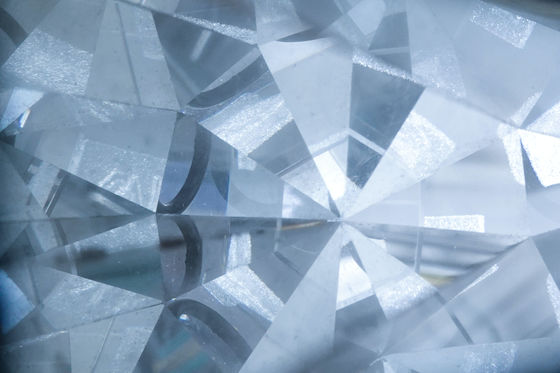Succeeded in capturing the vibration of a time crystal in the image for the first time in the world

A substance in which atoms and molecules are arranged with spatial periodicity is a '
World's first video recording of a space-time crystal | Max-Planck-Gesellschaft
https://www.mpg.de/16401528/world-s-first-video-recording-of-a-space-time-crystal
For The First Time, Physicists Have Filmed The Oscillation of a Time Crystal
https://www.sciencealert.com/watch-the-first-ever-video-of-a-time-crystal-oscillating
'Time crystal' is a substance that has periodicity not only in the spatial direction but also in the temporal direction, and was proposed by Frank Wilczek, a physicist at the Massachusetts Institute of Technology. Since the regular arrangement of particles extends not only in three-dimensional space but also in the time direction, it is a characteristic of time crystals that they have a four-dimensional crystal structure, and due to their unique structure, it is 'impossible to realize.' There is. '
However, in October 2016, a research team led by Professor Chris Monroe of the University of Maryland succeeded in creating a time crystal for the first time in the world. The basic process for creating a time crystal is very simple: create a ring-shaped quantum system like an ion group and cool it to the lowest energy state. Then, according to the laws of physics, the ring will be completely rested, and a time crystal will be generated.
Succeeded in generating 'time crystal' for the first time in the world --GIGAZINE

by Clint Budd
The state of the vibration of the time crystal was recorded in the video for the first time in the world. Using a scanning transmission X-ray microscope , the research team succeeded in capturing the vibration of time crystals generated using quasiparticle magnons in real time.
The following is a movie that captures the vibration of the time crystal that was actually shot, and is shot at a maximum of 40 billion frames per second.
Space-Time Crystal --YouTube
The research team, including Pawel Gruszecki, a physicist at Adam Mickiewicz University in Poland, succeeded in photographing the vibration of time crystals. 'This announcement has shown that time crystals are much more robust and more widespread than previously thought,' said Gruszecki. Regarding the magnon time crystal used in this shoot, Gruzecki said, 'It has the potential to lead to many potential applications.'
Many scientists use quasiparticles of magnon and Bose-Einstein condensation to produce time crystals. However, Gruzecki and his team are taking a different approach, using magnetic permalloys that can carry current using radio frequencies. When an electric current is passed through a magnetic permalloy, an oscillating magnetic field is generated and a magnetic wave is generated. This magnetic wave stimulates the magnon in Permalloy, and the moving magnon condenses into a periodic pattern and becomes a time crystal.
Nick Träger, a student at the Max Planck Institute for Intelligent Systems in Germany, who filmed the vibrations of time crystals with Gruszecki, said, 'We were able to show that time crystals can interact with other quasiparticles, not to mention movies. Nothing has ever shown this directly in an experiment. '

Time crystals theoretically oscillate in the lowest possible energy state, so they need to be stable and have high coherence over a long period of time. The method of producing time crystals using magnon proposed by Gruszecki et al.'S research team opens the door to an unprecedented 'practical application of time crystals' because the time crystals can be easily manipulated and generated easily. It may be the key to open it.
Communication, radar, imaging technology, etc. are mentioned as specific directions for application of time crystals.
Related Posts:






